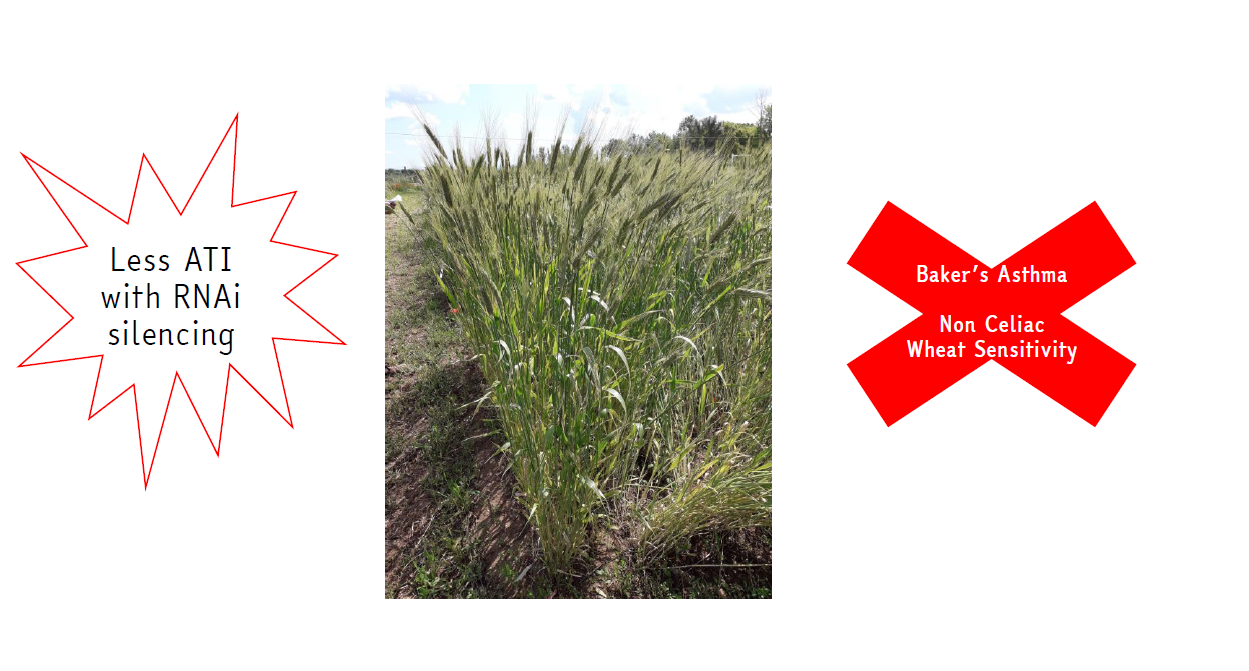Although wheat is used worldwide as a staple food, it can give rise to adverse reactions, for which the triggering factors have not been identified yet. These reactions can be caused mainly by kernel proteins, both gluten and non-gluten proteins. Among these latter, -amylase/trypsin inhibitors (ATI) are involved in baker’s asthma and realistically in Non Celiac Wheat Sensitivity (NCWS). In this paper, we report characterization of three transgenic lines obtained from the bread wheat cultivar Bobwhite silenced by RNAi in three ATI genes CM3, CM16 and 0.28. We have obtained transgenic lines showing an effective decrease of the activity of target genes that, although showing a higher trypsin inhibition as a pleiotropic effect, generate a lower reaction when tested with sera of patients allergic to wheat, accounting for the important role of the three target proteins in wheat allergies. Finally, these lines show unintended changes differences in high molecular weight glutenin subunits (HMW-GS) accumulation, involved in technological performances, but do not show differences in terms of yield. The development of new genotypes accumulating a lower amount of proteins potentially or effectively involved in such pathologies, not only offers the possibility to use them as a basis for the production of varieties with a lower impact on adverse reaction, but also to test if these proteins are actually implicated in those pathologies for which the triggering factor has not been established yet.

